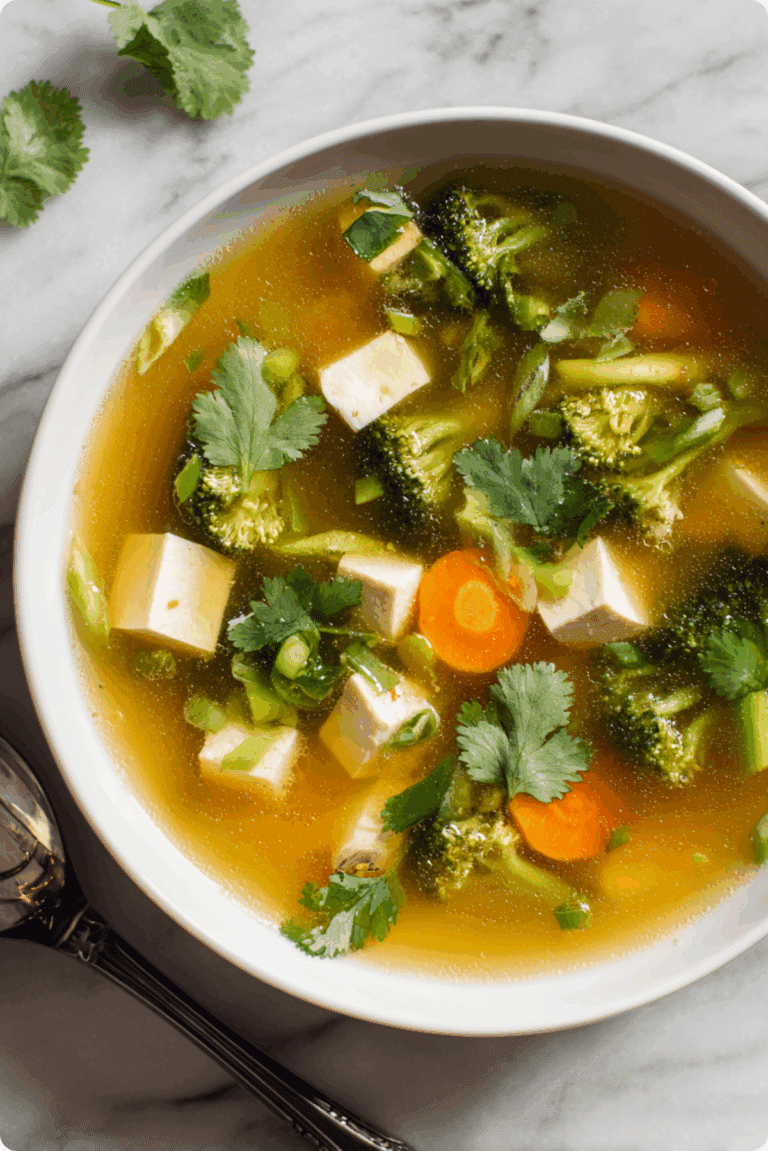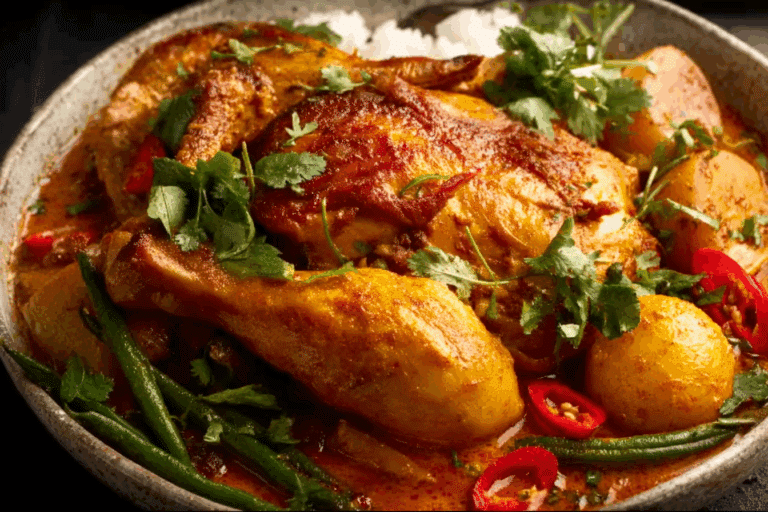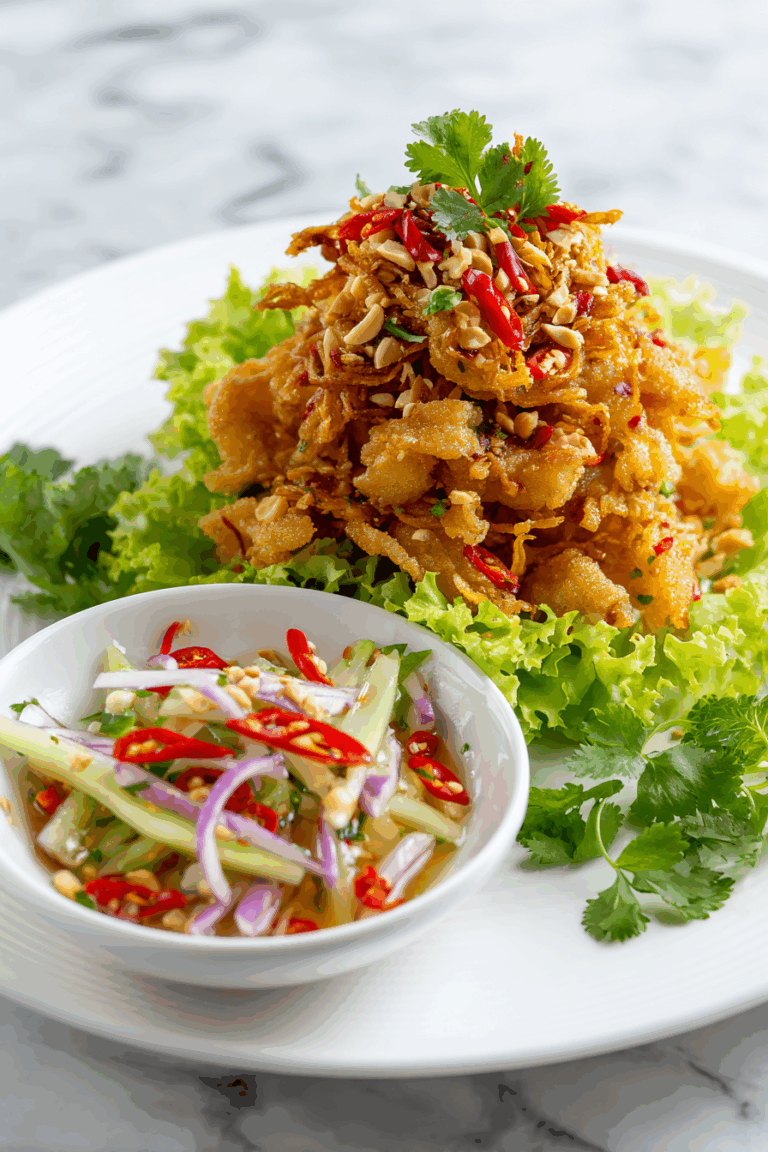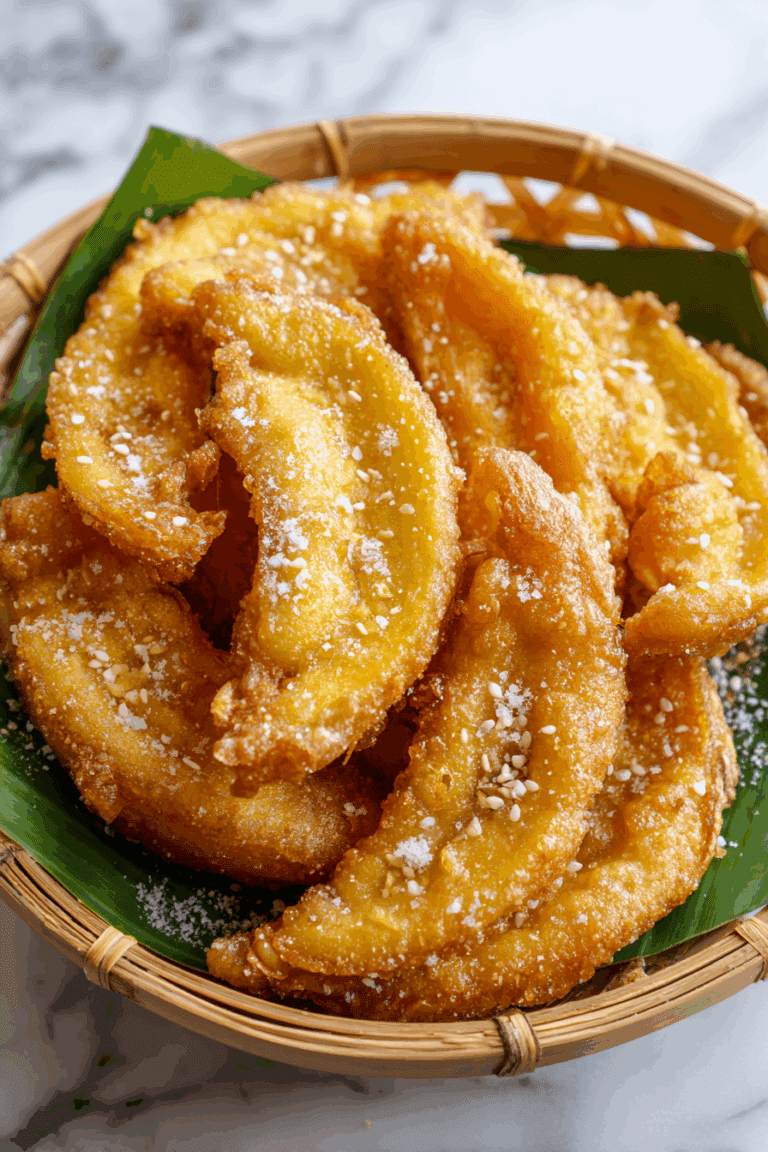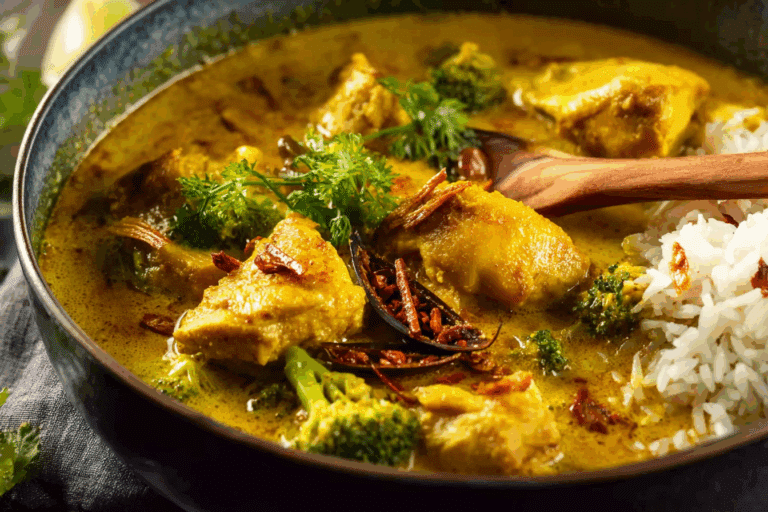The Best Shrimp and Noodle Clay Pot
Shrimp and Noodle Clay Pot is the kind of dish that sneaks into your week and turns an ordinary evening into something cozy and memorable. On my About page, I explain how Just Thai Recipes began with a hand scribbled notebook from long afternoons in my grandmother’s kitchen, a tiny apartment stove when I moved to the United States, and a promise to make Thai home cooking feel friendly, not fussy.
I used to cook in open air markets in Bangkok with my aunties, then I taught friends in small weekend classes after work, which led to recipe notes, small victories, and a lot of taste testing. That personal journey is why I love sharing recipes like Shrimp and Noodle Clay Pot, because it is comforting, fast, and deeply aromatic, which is exactly what drew me to Thai cooking in the first place.
Shrimp and Noodle Clay Pot is also known as goong ob woonsen by many Thai cooks, and it has a flavor that feels layered but not complicated. Aromatics like ginger, garlic, cilantro root, and black peppercorns bloom in the pot, bacon adds a smoky richness, and glassy bean thread noodles soak up a savory sauce built from oyster sauce, thin soy sauce, dark soy sauce, and sesame oil. If you are curious about variations, you will see different names floating around the internet, which is helpful for searching.
Some home cooks call it shrimp with glass noodles Chinese style, others say steamed shrimp with glass noodles, a few describe it as garlic shrimp with glass noodles, and you might also spot the term shrimp glass noodles recipe. For searchers who want a broader phrase, try shrimp and noodle clay pot recipe or even shrimp and noodle clay pot Chinese for regional twists. I will walk you through a version that tastes restaurant worthy, which is still easy enough to pull off after work.
If you are brand new to the dish, the magic of Shrimp and Noodle Clay Pot comes from two smart steps. First, you soak bean thread noodles which are sometimes labeled glass noodles or cellophane noodles, until they are supple. Second, you build layers in a heavy clay pot or a small Dutch oven.
Table of Contents
Table of Contents
Ingredients
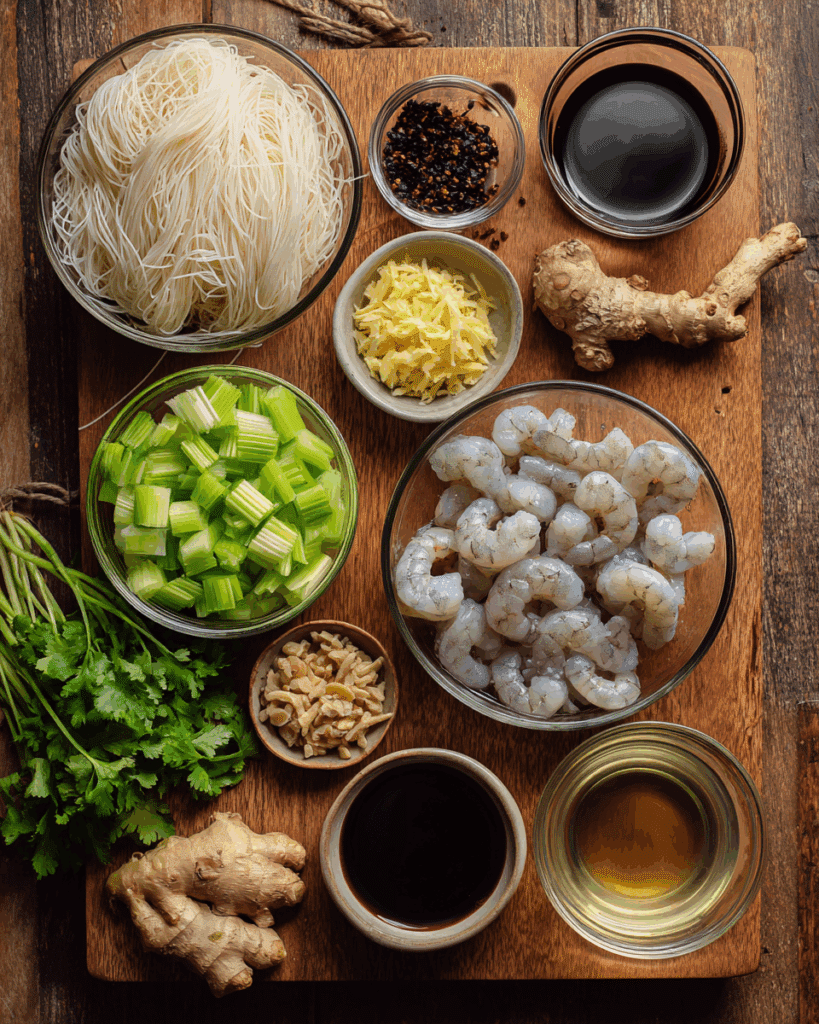
The ingredient list for Shrimp and Noodle Clay Pot might look detailed at first glance, but each item has a purpose, which means you will taste every choice. Here is everything you need, followed by a few sensible swaps for different kitchens and pantries.
12 shrimp, medium or large, peeled and deveined, tails on if you like a pretty presentation
3 ounces bean thread noodles, which often come bundled in small cakes, you will need about two small bundles that total roughly three ounces
3 strips bacon, cut into 1 inch pieces
1 cup Chinese celery, cut into bite sized pieces, leaves and tender stems
2 tablespoons ginger, sliced thinly, save 10 to 20 matchstick slices for layering
1 tablespoon garlic, sliced thinly
1 teaspoon black peppercorns
2 cilantro roots, washed and trimmed, or use a small handful of cilantro stems if roots are not available
2 tablespoons oyster sauce
1 tablespoon thin soy sauce
1 tablespoon dark soy sauce
1 teaspoon sesame oil
3 fourths cup water
Smart swaps and notes for Shrimp and Noodle Clay Pot, especially if you are shopping quickly or cooking from the pantry
If you cannot find Chinese celery, use regular celery leaves and very thinly sliced young stalks, or swap in scallions for a different green bite.
If cilantro roots are hard to find, use the lower stems of a fresh cilantro bunch, which carry a lot of the same fragrance.
If you prefer a pork free version, skip the bacon and use a tablespoon of neutral oil plus a teaspoon of toasted sesame oil for depth.
If your bean thread noodles come in a large 40 gram cake, use about 85 grams total to land near three ounces. Do not worry about a gram or two either way.
If you want extra seafood sweetness, add two or three small dried shrimp to the pot, which is optional but traditional in some families.
If you like heat, you can add a few thin slices of fresh bird’s eye chili toward the end, which keeps the dish bright and not overpowering.
A few shopping hints that make Shrimp and Noodle Clay Pot easier on a weeknight
Look for shrimp that are labeled 21 to 25 per pound if you want plump bites. If using frozen shrimp, thaw in the fridge overnight or rest sealed shrimp in a bowl of cold water for 20 to 30 minutes.
Choose a good quality oyster sauce that tastes balanced, not overly sweet. It matters because the sauce is simple, which means every component shows up on the palate.
Use whole black peppercorns for the spice paste, not preground pepper, which loses aroma quickly.
If you do not own a clay pot, a small heavy Dutch oven or a stainless steel saucepan with a thick base will work, which is a great option for beginners.
Step by Step Instructions
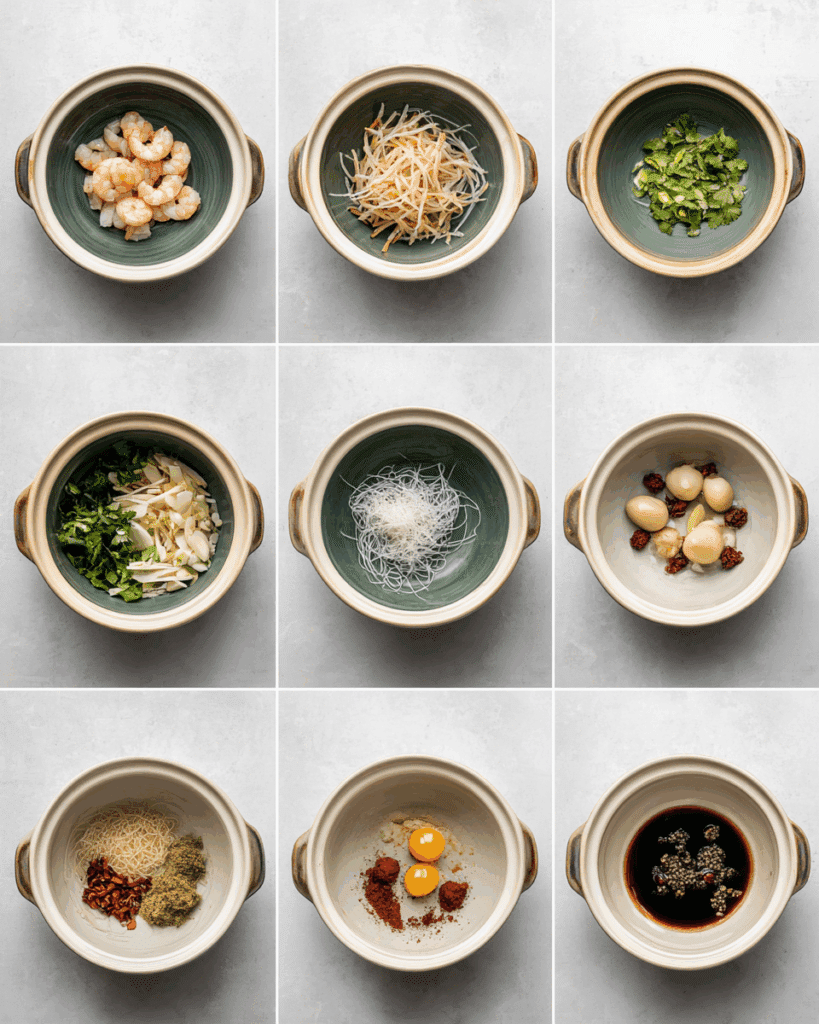
These steps will take you from soaking to serving. To help you see a few stylistic differences and background, I am also linking two trusted resources in this section for reference and inspiration. You can check Rachel Cooks Thai for a slightly different approach and timing, and Cooking With Nart for photos and notes that may answer common questions. Those are helpful if you want to read more before you begin, or if you like to compare methods when you try a new recipe.
Soak the noodles
Place the bean thread noodles in a bowl and cover with cool water. Let them soak while you prepare the aromatics, which usually takes 10 to 30 minutes. The noodles should become pliable and glassy, which is important because they cook quickly and need to absorb sauce rather than water.
Make the spice paste
Peel the garlic and ginger. Slice the ginger thinly, then set aside 10 to 20 matchstick slices for layering later. Wash the cilantro root, trim it, and cut it into half inch pieces. Place ginger, garlic, cilantro root, and whole black peppercorns into a mortar and pestle. Pound until a coarse paste forms. It does not need to be smooth. A little texture helps the aromatics keep their identity in the pot.
Mix the sauce
In a bowl, combine oyster sauce, thin soy sauce, dark soy sauce, sesame oil, and water. Stir until the sauces are well combined. If you want a little extra savory depth, add another teaspoon of oyster sauce. If you prefer a leaner taste, add a squeeze of lime at the end rather than increasing sauce amounts now.
Layer the pot
Lay the bacon pieces in a single layer on the bottom of your clay pot or heavy saucepan. Spoon a thin layer of the spice paste over the bacon. Scatter a few of the reserved ginger matchsticks. Drain the noodles and add them in an even layer. Nestle the shrimp on top of the noodles. Pour the sauce evenly over everything. If you want your Chinese celery to stay bright and crisp, hold it back for the last five minutes of cooking.
Cook on the stovetop
Place the pot over medium high heat. If your pot is very thin, use a heat diffuser. Cover and cook for about 20 minutes. Check at 15 minutes if your shrimp are very small. When it is ready, the shrimp will be pink and just firm, the noodles will be soft and glossy, and the bacon will have rendered some fat that flavors the whole dish. Add the Chinese celery in the last five minutes if you saved it.
Toss and serve
Mix the contents of the pot gently so the bacon, aromatics, and noodles mingle. Transfer to a serving plate, or serve straight from the pot, which keeps the dish warm at the table. If you like a bright and spicy dip, set out a small bowl of nam jim seafood. A light sprinkle of fresh cilantro leaves or thinly sliced scallions is a nice finish.
For additional reading and photo references, see these two helpful guides, which show stylistic tweaks you may enjoy
https://rachelcooksthai.com/shrimp-noodle-clay-pot/
https://www.cookingwithnart.com/thai-shrimp-and-glass-noodles-goong-ob-woonsen/
If you want to explore related ideas for later, you can search terms like shrimp and noodle clay pot recipe, shrimp and noodle clay pot Chinese, shrimp and noodle clay pot with rice, easy shrimp and noodle clay pot, shrimp with glass noodles Chinese, garlic shrimp with glass noodles, shrimp glass noodles recipe, and steamed shrimp with glass noodles. These phrases often lead to helpful visuals and timing notes, which can build confidence the first time you cook Shrimp and Noodle Clay Pot.
Tips and Tricks
Shrimp and Noodle Clay Pot is one of those recipes that looks straightforward but rewards you for paying attention to little details. The difference between a good version and a truly memorable one often comes down to texture, heat control, and timing. After cooking this dish countless times for friends and for readers of Just Thai Recipes, I have learned that a few small adjustments can make it absolutely shine.
First, the noodles. Bean thread noodles can be tricky if you soak them too long or not long enough. If you forget them in the water and they turn mushy, they will absorb too much liquid later and become soggy. If you skip soaking or rush the step, they will stay rubbery in the pot. The sweet spot is around twenty minutes in room temperature water.
They should be soft and bendy but still hold their shape. When you drain them, cut them with scissors into shorter lengths so they mix evenly with the shrimp and sauce. This tiny trick makes eating Shrimp and Noodle Clay Pot easier because you do not have to wrestle with long tangled noodles at the table.
Second, your heat source matters. A traditional clay pot spreads heat evenly and gently, which prevents burning. If you use a stainless steel pan or Dutch oven, try to cook over medium heat instead of high. The bottom bacon layer should render and brown slowly so it seasons the noodles rather than crisping too fast. That gentle heat is what gives Shrimp and Noodle Clay Pot its signature aroma, which smells smoky, garlicky, and sweet all at once.
Another small trick is to mix the sauce twice. Once before pouring it over the noodles, then again halfway through cooking by gently lifting the pot and swirling. This keeps the salty and sweet flavors balanced throughout. If you skip this, sometimes the top noodles stay pale while the bottom layer gets too dark.
Finally, when serving, resist the urge to immediately scoop everything out. Let the Shrimp and Noodle Clay Pot rest for three minutes off the heat with the lid on. The steam will settle, the noodles will soak up a final wave of sauce, and the shrimp will stay juicy. Those extra minutes make a surprising difference.
If you want to make it look special, garnish with cilantro leaves or thin rings of red chili. The color contrast against the golden noodles makes it look like something you would find in a cozy Thai restaurant.
Variations
Shrimp and Noodle Clay Pot is endlessly adaptable, which makes it a perfect dish to experiment with once you master the base version. In Thailand, each family has their own way of preparing it, and the differences often come from the choice of protein, the type of noodles, or the flavor profile of the sauce. Here are several creative ways to twist the recipe without losing its soul.
1. Shrimp and Noodle Clay Pot with Rice
If you want a heartier meal, replace the noodles with cooked jasmine rice. Spread the rice at the bottom of the clay pot instead of bacon, then layer the shrimp and sauce on top. The rice will absorb the savory flavors and turn slightly crispy at the edges. This version feels comforting and closer to a one pot shrimp fried rice, but with a gentler, smoky taste. It is also a clever way to use up leftover rice from the night before.
2. Easy Shrimp and Noodle Clay Pot for Busy Nights
For those evenings when you are short on time, you can use pre minced garlic and ginger, and a store bought stir fry sauce that contains oyster sauce and soy. The flavor will be slightly milder, but still rich enough for a satisfying dinner. To keep it balanced, sprinkle a pinch of ground white pepper and drizzle a few drops of sesame oil before serving. This version takes barely twenty minutes from start to finish, which is why many readers call it their weeknight hero.
3. Garlic Shrimp with Glass Noodles Twist
If you want to highlight garlic, double the amount of sliced garlic and let it brown gently in oil before layering the rest of the ingredients. The noodles will carry a warm roasted garlic perfume that fills your kitchen. It is especially delicious if you add a small handful of bean sprouts at the end for crunch.
4. Shrimp Glass Noodles Recipe with Mixed Seafood
In Thailand, you will sometimes see a seafood clay pot that includes scallops, squid, and shrimp. The cooking time stays roughly the same, but the variety of textures makes it more festive. If you have guests over, this is a beautiful version to serve straight from the pot to the table.
5. Steamed Shrimp with Glass Noodles Style
If you prefer a lighter, cleaner version of Shrimp and Noodle Clay Pot, you can steam it instead of cooking on the stovetop. Use a heatproof bowl or smaller clay pot placed inside a large steamer. The result is delicate, with less smoky bacon flavor, but more focus on the sweetness of the shrimp and the aroma of ginger and cilantro.
Each of these variations keeps the spirit of Shrimp and Noodle Clay Pot alive while letting you adapt it to your mood, your pantry, or the season. The dish is forgiving, which is what makes it so beloved by home cooks. You can experiment freely and still end up with something that tastes balanced and deeply satisfying.
Nutrition and Health Benefits
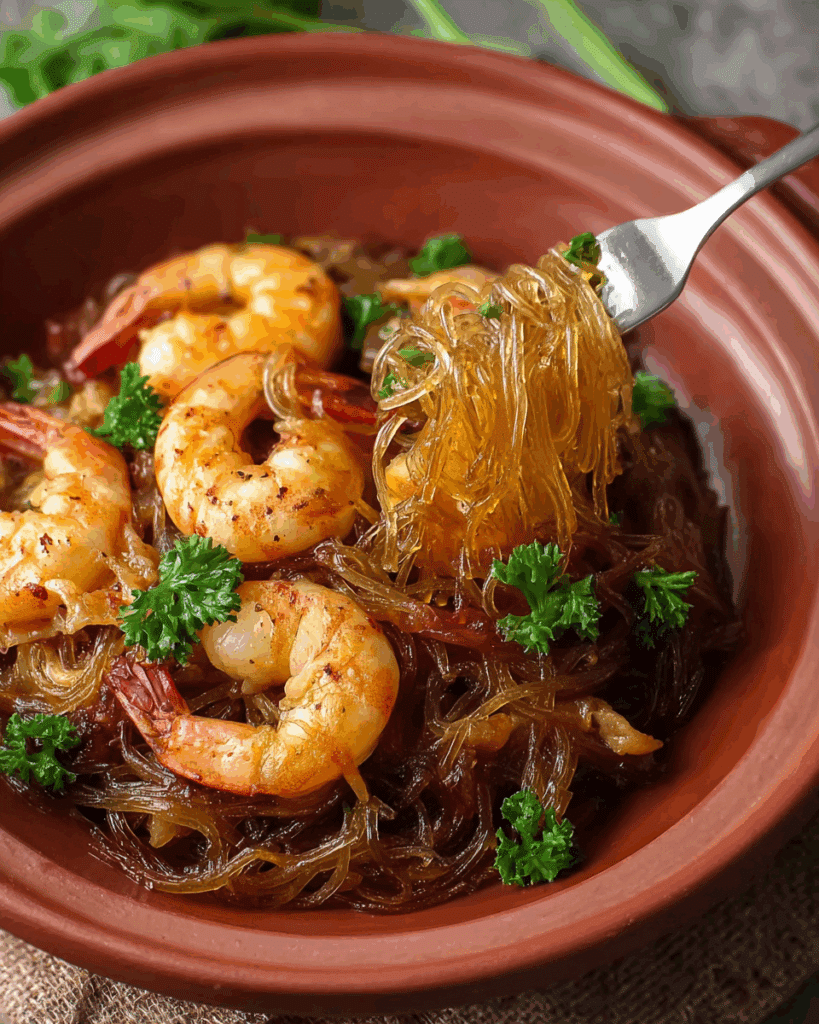
One of the reasons Shrimp and Noodle Clay Pot remains a favorite among Thai families is that it manages to be both flavorful and relatively light. The combination of shrimp, bean thread noodles, and herbs makes it nourishing without feeling heavy, which is perfect for those who want comfort food that does not weigh them down.
Let us start with the star ingredient. Shrimp is high in protein and low in calories, which makes it an ideal choice for those watching their fat intake. A serving of Shrimp and Noodle Clay Pot typically includes around twelve shrimp, which adds up to about twenty five grams of lean protein. Shrimp also provides selenium, vitamin B12, and antioxidants like astaxanthin, which supports heart health and reduces inflammation.
The noodles, often called glass noodles or bean thread noodles, are made from mung bean starch. They are naturally gluten free and have a gentle, slippery texture that pairs beautifully with seafood. While they are mostly carbohydrates, they have a lower glycemic index than wheat noodles, which means they release energy more slowly and help keep you full longer.
The aromatics in Shrimp and Noodle Clay Pot bring more than flavor. Garlic and ginger are known for their immune boosting properties. Garlic supports heart health and helps reduce cholesterol, while ginger aids digestion and reduces nausea. Cilantro roots and celery add vitamins A and C, which help the body fight oxidative stress.
Bacon adds fat and richness, but you can easily control how much you use. A few small pieces go a long way toward giving the dish its signature aroma. If you want a lighter version, swap bacon for a drizzle of sesame oil and still enjoy the same depth of flavor.
From a calorie standpoint, a generous bowl of Shrimp and Noodle Clay Pot typically comes in around 400 to 500 calories depending on how much bacon or oil you use. It provides about 35 grams of protein, 40 grams of carbohydrates, and 15 grams of fat. That balance makes it a complete meal, especially when paired with a side of steamed vegetables or a small soup.
Eating Shrimp and Noodle Clay Pot also offers a sensory benefit that goes beyond numbers. The warmth of the clay pot, the steam carrying notes of soy, oyster sauce, and pepper, and the soft yet bouncy noodles all satisfy the senses. It is the kind of food that makes you slow down, which is healthy in its own way. Cooking and eating mindfully is one of the easiest and most rewarding forms of self care.
Make Ahead, Storage, and Freezing
One of the most wonderful things about Shrimp and Noodle Clay Pot is that it fits into real life. You can make it ahead, store it, or even freeze components for later. I have tested all three methods many times because life gets busy, and sometimes dinner just cannot be made from scratch every night.
Let’s start with make ahead preparation. The ingredients for Shrimp and Noodle Clay Pot can be prepped a few hours in advance. You can pound the garlic, ginger, cilantro root, and peppercorns into a paste and keep it covered in the refrigerator. The sauce mix, which includes oyster sauce, soy sauces, sesame oil, and water, can also be made ahead and stored in a small jar for up to three days.
Shrimp can be cleaned and deveined, then patted dry and refrigerated until you are ready to cook. The noodles should always be soaked right before cooking, not ahead of time, because they lose their bounce if left sitting in water too long.
If you are planning to assemble everything in advance, you can layer the bacon and aromatics in the pot, cover it, and store it in the fridge for up to a day. When you are ready to cook, simply soak your noodles, drain them, add them with the shrimp and sauce, and continue as usual. This trick makes Shrimp and Noodle Clay Pot perfect for entertaining because you can do most of the prep earlier and still serve a hot, fresh dish without rushing around.
Storing leftovers is also easy. Once your Shrimp and Noodle Clay Pot cools to room temperature, transfer it into an airtight container. It keeps well in the fridge for up to three days. The noodles will firm up a little as they chill, so when reheating, add a tablespoon or two of water or broth to loosen them. Warm it on the stovetop over medium heat or in the microwave in short intervals, stirring once or twice until heated through.
Freezing is not ideal for fully cooked Shrimp and Noodle Clay Pot because the noodles tend to turn mushy when thawed, but you can freeze the sauce and spice paste separately. These frozen bases make it quick to recreate the dish later without measuring each ingredient again. Simply defrost the sauce and paste overnight in the refrigerator, prepare fresh noodles and shrimp, and you can enjoy that same savory clay pot flavor in half the time.
If you like to meal prep, another option is to portion the sauce, spice paste, and cleaned shrimp in small bags and freeze them as a set. Label them with the date and “Shrimp and Noodle Clay Pot starter.” When you crave it again, you only need to soak noodles and add celery or herbs. It feels like magic on a busy weeknight.
Common Mistakes to Avoid
Every home cook makes mistakes, especially when trying something new. The beauty of Shrimp and Noodle Clay Pot is that even if you make a few small slips, it still turns out tasty. Still, a few lessons can save you frustration and ensure the texture and flavor come out just right.
The first and most common mistake is skipping the noodle soak. Some people throw the dry noodles directly into the pot thinking they will soften as they cook, but that leads to uneven textures and dry spots. Always soak them until they are soft and flexible before layering them.
The second mistake is overcooking the shrimp. Shrimp cook faster than most people think, and they continue to cook even after you remove them from heat. If you leave the pot unattended for too long, they become rubbery instead of tender. Keep an eye on them during the last few minutes. The moment they turn pink and curl slightly, they are done.
Another mistake is using too much heat at the start. Bacon burns easily, and burnt bacon flavor can overpower the delicate sauce. Always start with medium or medium high heat, which lets the bacon render slowly and flavor the noodles naturally.
The fourth mistake I see often is forgetting to balance the sauce. Some cooks pour extra soy sauce or oyster sauce to make it saltier, but that can overwhelm the shrimp. If you crave more flavor, it’s better to finish the dish with a squeeze of lime juice or a sprinkle of white pepper rather than more soy. The original proportions are balanced for a reason.
Finally, one subtle mistake is not mixing the ingredients gently after cooking. Shrimp and Noodle Clay Pot should feel like a blend of soft noodles, savory shrimp, and fragrant bits of ginger and garlic. If you stir too aggressively, the noodles break apart, and the shrimp may tear. Toss with chopsticks or two wooden spoons just enough to combine.
Avoiding these small missteps ensures your Shrimp and Noodle Clay Pot stays fragrant, flavorful, and perfectly textured every time. Once you master it, it becomes one of those dishes you can make confidently without even looking at the recipe again.
Cultural and Historical Background
Every Thai recipe tells a story, and Shrimp and Noodle Clay Pot is no different. This humble yet elegant dish, known in Thailand as Goong Ob Woon Sen, carries generations of coastal cooking traditions that merge Chinese techniques with Thai ingredients. It began in seaside towns where shrimp was fresh and abundant, and cooks looked for ways to stretch small amounts of seafood into filling meals. The clay pot technique came from Chinese immigrants who brought with them the art of slow simmering food in earthenware, which keeps moisture inside and enhances aroma.
In Thailand, Shrimp and Noodle Clay Pot became popular during the mid twentieth century when street vendors began serving it to travelers and workers. The visual appeal of bubbling noodles and steaming clay pots drew crowds. Over time, it found its place in both family kitchens and upscale Thai restaurants. In some regions, cooks use glass lids so diners can watch the shrimp turn pink while the aroma of garlic and cilantro fills the air.
The combination of oyster sauce and soy sauces reflects the Chinese influence, while the use of cilantro root and black pepper speaks to Thai flavor layering. Bacon, which is not traditionally Thai, found its way into the recipe later, adding a smoky note that appealed to modern palates. It is this blend of influences that makes Shrimp and Noodle Clay Pot so interesting. It feels familiar to both Thai and Chinese cooks, yet unique enough to stand on its own.
In Thai households, Shrimp and Noodle Clay Pot is often a centerpiece dish during family gatherings. It is considered comfort food, warm and inviting, perfect for sharing. The clay pot itself is symbolic, representing togetherness and home. The way everyone lifts the lid together to release the steam is like unveiling a shared reward after patient cooking.
Even today, many Thai markets sell prepared kits for Shrimp and Noodle Clay Pot, with noodles, sauces, and spices bundled together. It shows how much this dish has become part of everyday life. In restaurants, it is usually served sizzling in the same pot it was cooked in, often with a side of spicy seafood dipping sauce that balances the richness.
Understanding its cultural roots makes cooking it even more meaningful. When you prepare Shrimp and Noodle Clay Pot at home, you are continuing a story that began generations ago in small coastal kitchens, where the smell of shrimp and ginger drifted into the night and families gathered around warm pots to share simple joy.
Serving Suggestions
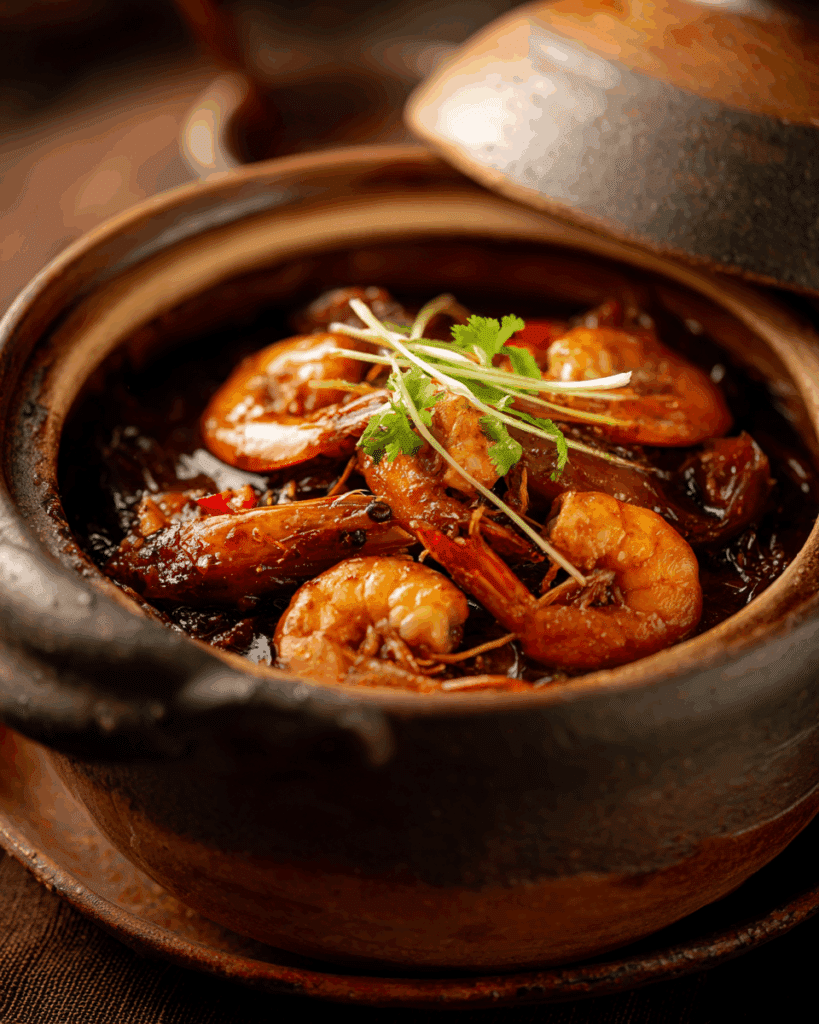
Shrimp and Noodle Clay Pot loves a simple table, and it shines when you pair it with a few clean sides that let the fragrance take the lead. I like to bring the pot to the table still warm, then lift the lid so the steam rolls out. The moment the peppery ginger aroma hits the air, everyone leans in.
Shrimp and Noodle Clay Pot sits nicely next to a plate of crisp cucumbers and a handful of fresh herbs, which keeps the bite lively. If you want a fuller spread, add a light soup or a quick stir fried green, and you will see how Shrimp and Noodle Clay Pot anchors the meal without feeling heavy.
The balance of textures matters, so think about contrast. Shrimp and Noodle Clay Pot is silky and savory, which means a crunchy side helps. A small dish of pickled vegetables, a bowl of blanched broccoli with a squeeze of lime, or a simple salad of herbs and onion can brighten the plate. When I am cooking for friends who love heat, I set out sliced chilies, which let each person tune their bowl of Shrimp and Noodle Clay Pot to their own liking.
A few roasted peanuts on the side can be a nice touch as well, especially if you want a nutty crunch with the glossy noodles. You can also keep it gentle and let Shrimp and Noodle Clay Pot be the star, then pour hot tea to cleanse the palate between bites.
Rice or no rice is a personal call. Shrimp and Noodle Clay Pot already delivers noodles, so you do not need rice to feel satisfied, though a small scoop of jasmine rice makes the meal feel more like a family feast.
When I do add rice, I keep the portion small and spoon Shrimp and Noodle Clay Pot over the top so the grains absorb the sauce. If you prefer a lighter dinner, skip the rice and enjoy a bigger portion of greens. Either way, Shrimp and Noodle Clay Pot stays center stage, and the sides play backup.
Garnishes should be friendly, not fussy. Fresh cilantro leaves, thin slices of scallion, and a dusting of white pepper are enough. A wedge of lime on the plate adds a clean finish that lifts the soy and oyster sauce notes in Shrimp and Noodle Clay Pot.
If you want to lean into seafood sweetness, a tiny drizzle of honey in a little dish on the side surprises people, and a light dip can bring out the shrimp flavor. I have also served Shrimp and Noodle Clay Pot with a cold sliced tomato salad, which sounds simple, yet the juicy tomatoes set off the warm noodles beautifully.
For drinks, keep it simple and refreshing. Light lager, sparkling water with lime, jasmine tea, or a dry white wine all work. Shrimp and Noodle Clay Pot rewards a crisp sip that resets your mouth. If you love leftovers, plan for them.
The next day, warm the noodles gently with a splash of water, top with a fried egg, and you have a satisfying lunch. When you build a table around Shrimp and Noodle Clay Pot, remember that the goal is comfort. Let the pot speak, add a few bright notes, and enjoy the way it invites everyone to serve themselves and settle in.
Shrimp and Noodle Clay Pot is also a great party dish. You can cook two pots at once if you have space, then rotate them to the table so each guest gets a steamy, aromatic scoop. The noodles hold heat, the shrimp stay juicy, and the bacon and aromatics perfume the room.
For a small household dinner or a birthday spread, Shrimp and Noodle Clay Pot always feels special without demanding too much from the cook. That is the charm. Shrimp and Noodle Clay Pot does the heavy lifting, you just add a few fresh touches and share.
Conclusion
Shrimp and Noodle Clay Pot is honest cooking. It respects simple steps, it rewards patience, and it turns a handful of ingredients into a bowl that feels generous and soothing. When you make Shrimp and Noodle Clay Pot, you practice the small skills that make home cooking joyful, like soaking noodles just right, toasting aromatics until they bloom, and layering flavors so they meet in the middle.
The result is a glossy tangle of noodles, tender shrimp, and a sauce that tastes like it was simmered for hours, even though it came together with a calm hand and a steady flame. Share it with someone you love, save a bowl for yourself tomorrow, and keep Shrimp and Noodle Clay Pot in your back pocket for nights when you need dinner to be warm, steady, and ready.
FAQ
What should I serve with Shrimp and Noodle Clay Pot
Keep sides simple and bright. Sliced cucumbers, a light herb salad, blanched greens, or a small bowl of jasmine rice all support Shrimp and Noodle Clay Pot without competing. A squeeze of lime and a dusting of white pepper add lift. For drinks, try jasmine tea or sparkling water with citrus. The goal is to let Shrimp and Noodle Clay Pot carry the meal, while the sides provide freshness and contrast.
Can I make Shrimp and Noodle Clay Pot without bacon
Yes, you can. Use a tablespoon of neutral oil and a teaspoon of sesame oil to create a savory base, then layer the spice paste, noodles, and shrimp as usual. The flavor will be cleaner and a little lighter, which some families prefer on warm days. If you miss the smoky note, add a pinch of smoked salt at the end. Either way, Shrimp and Noodle Clay Pot keeps its identity and still tastes comforting.
How do I keep noodles from turning mushy in Shrimp and Noodle Clay Pot
Soak the bean thread noodles in cool water until they are flexible, then drain well and cut them into shorter lengths. Do not soak too long or they will soften too much before cooking. Add them in a single layer so the sauce can reach all sides. Gentle heat and a covered pot help the noodles absorb flavor without falling apart. Follow these steps and your Shrimp and Noodle Clay Pot will have a springy, pleasant bite.
What is the best pot for Shrimp and Noodle Clay Pot
A traditional clay pot spreads heat evenly and keeps moisture inside, which is ideal for Shrimp and Noodle Clay Pot. If you do not have one, a small Dutch oven with a thick base works. A sturdy stainless steel saucepan can also succeed if you keep the heat in the medium range. The important thing for Shrimp and Noodle Clay Pot is even heat and a lid that fits well, which keeps the noodles glossy and the shrimp tender.



